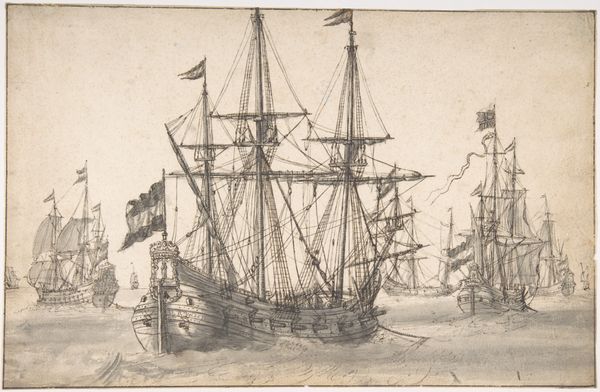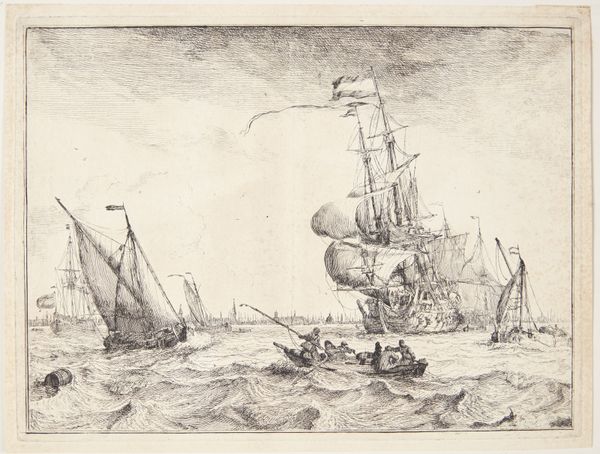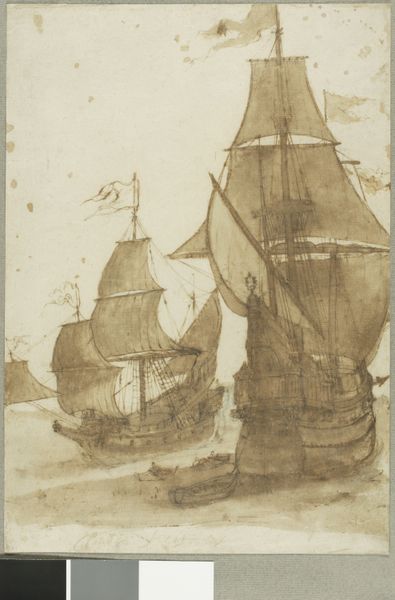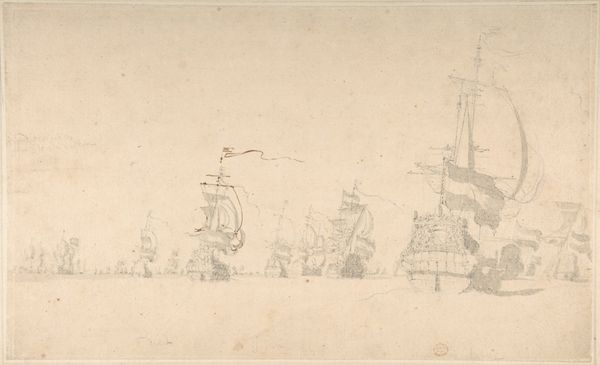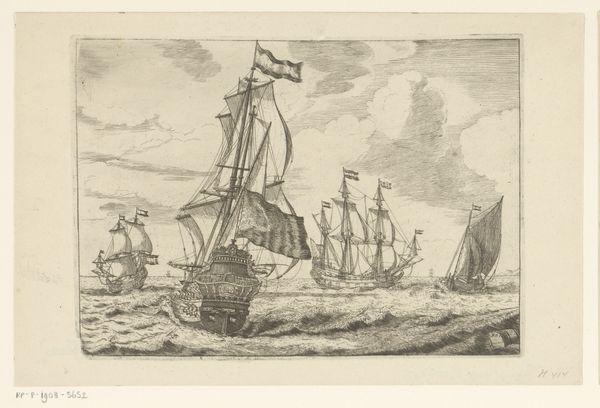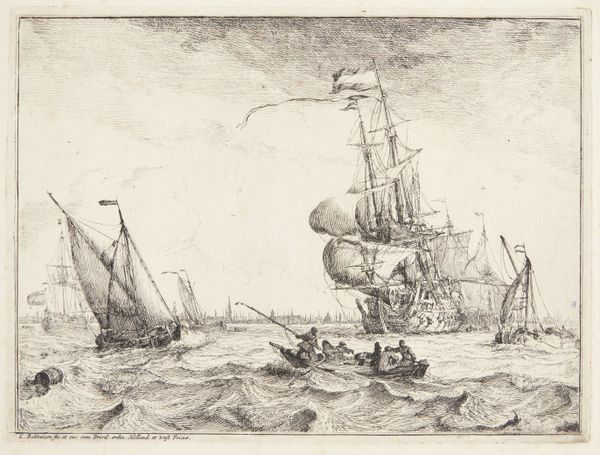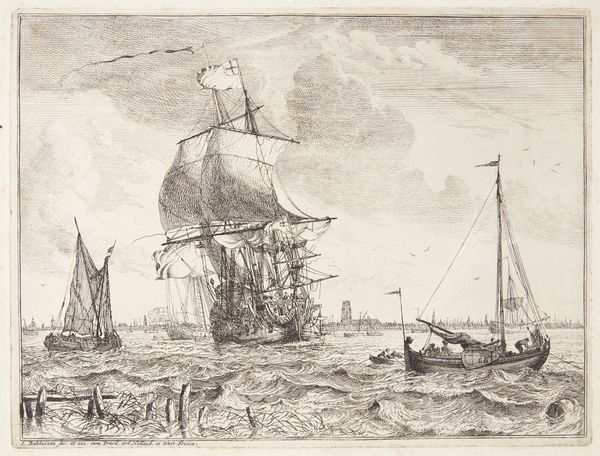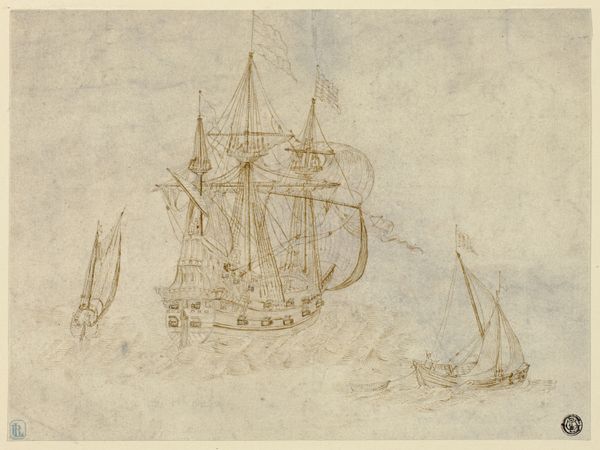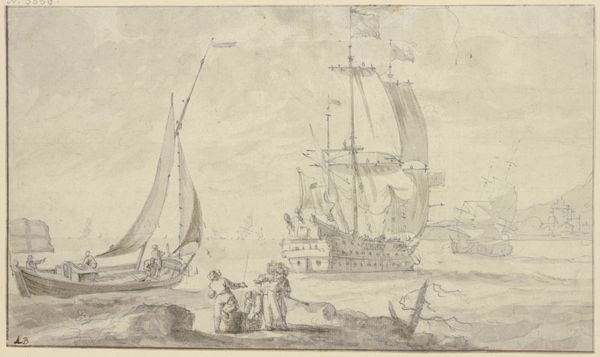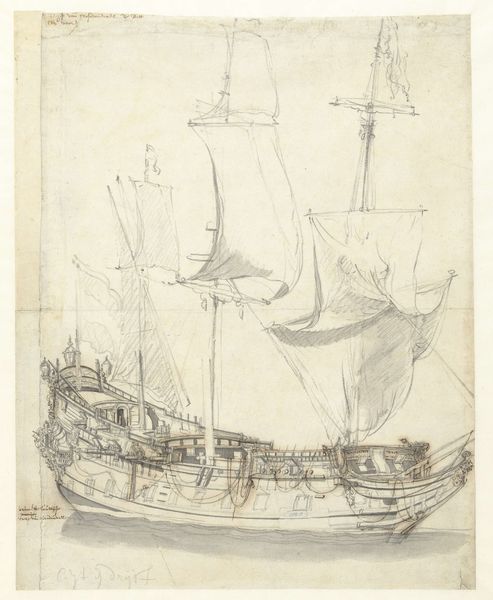
Dutch Merchant Ships at Anchor or under Easy Sail in a Moderate Breeze 1655 - 1661
0:00
0:00
drawing, ink
#
drawing
#
dutch-golden-age
#
landscape
#
ink
Dimensions: 6 1/2 x 9 1/8 in. (16.5 x 23.1 cm)
Copyright: Public Domain
Editor: We're looking at "Dutch Merchant Ships at Anchor or under Easy Sail in a Moderate Breeze," a pen and ink drawing by Willem van de Velde the Elder, created sometime between 1655 and 1661. The image feels very serene and calm to me, almost dreamlike with its delicate lines. What draws your eye when you look at it? Curator: The ships, naturally, and what they represent. In 17th century Netherlands, merchant ships weren't just vessels; they were potent symbols of Dutch identity, representing prosperity, global reach, and even national pride. Editor: Pride? How so? Curator: Well, consider the Golden Age, when the Netherlands dominated maritime trade. Ships like these were essential for that economic and cultural flourishing. Each sail could represent not only trade routes but also exploration and the assertion of Dutch power. Look at the careful rendering of the rigging, almost like a proud display. It goes beyond simple depiction; it’s a visual shorthand for Dutch innovation and maritime expertise. What about the direction of the sails, do they suggest anything to you? Editor: The varying angles could indicate different destinations or perhaps the complex nature of trade itself— lots of comings and goings. It's more than just pretty ships on the water, then? Curator: Precisely. The artist uses the symbols of ships to capture an era of exploration and enterprise, anchoring the image deeply in its cultural moment. This single image encapsulates Holland’s complex identity and its relationship with the sea. Editor: I never thought of a ship as a cultural symbol with that much weight, but you've completely changed my perspective! I’ll certainly see maritime art differently now. Curator: That's the beauty of understanding iconography, isn't it? To unlock the silent stories images tell across centuries.
Comments
No comments
Be the first to comment and join the conversation on the ultimate creative platform.

